Walking Guide: Carsaig Arches
Often heralded as one of the most challenging walks on Mull, a hike to the Carsaig Arches is undeniably also one of the most spectacular. It’s the uncompromising landscape that makes the route so tricky and yet so stunning. The way is punctuated by steep-sided cliffs and sheer drops, as well as being strewn with rocks. But it’s the same landscape that makes the experience so remarkable, even before you reach the arches themselves. For keen walkers, venturing to the Carsaig Arches is highly recommended.
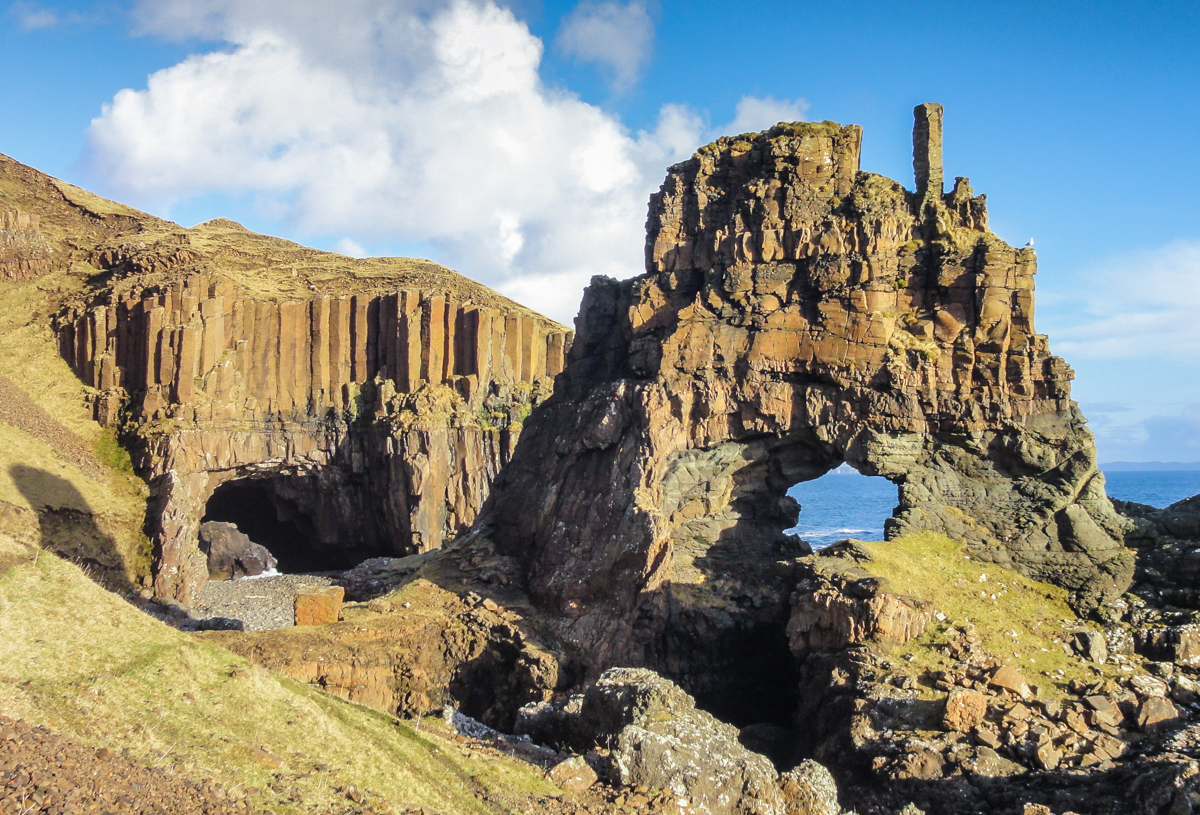
Along the shoreline route, your gaze leads directly out to the sea south of Mull. On a clear day, it can land on neighbouring islands, or simply soak in the steady, rhythmic swell of the waves as they sweep in. Look out for Colonsay and Jura, unmistakable with its towering Paps, on the horizon.
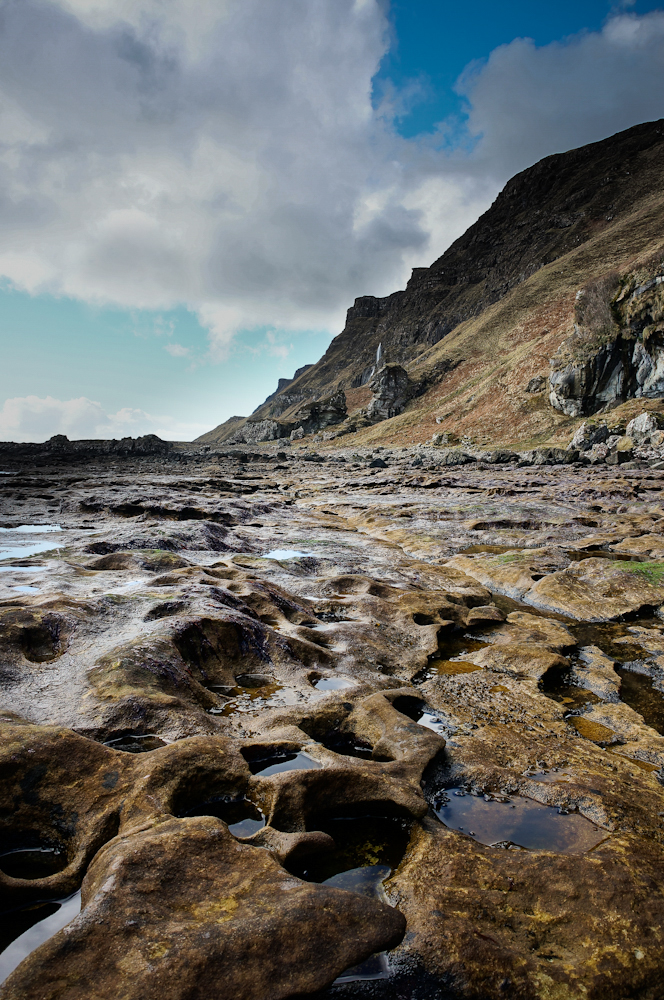
Follow the shoreline west to reach the Carsaig Arches.
It’s not a walk for those not physically prepared to put in the best part of a day navigating difficult ground over uneven, rocky shoreline. Take provisions to keep your energy levels up and stay hydrated. Pull on your sturdiest pair of walking boots, because when you reach the Carsaig Arches and take in the naturally eroded features first-hand, you’ll be glad you made the trip.
The walk to Carsaig Arches on Mull
Your journey begins on foot from the small parking area beside the pier at Carsaig. Getting here in itself is a bit of an adventure. Turning off just outside Pennyghael, follow a narrow lane down hill. You will first pass a waterfall and red phone box before reaching the pier and sea.
Keep an eye out for the seals that often claim these rocks for a spot to slumber. They won’t be the only wildlife you can expect to meet. Wild goats roam the cliffs here, and eagles aren’t uncommon sights overhead.

View of Carsaig Bay at the beginning of the walk.
Head west around Carsaig Bay to begin your journey to the Carsaig Arches. Following the coastline makes navigating reasonably straight forward, which is helpful when the terrain demands more of your attention. Following the shore along enables you to appreciate the magnitude of the cliffs above, where you can still discern the different lava flows that formed much of Mull’s landscape 60 million years ago.
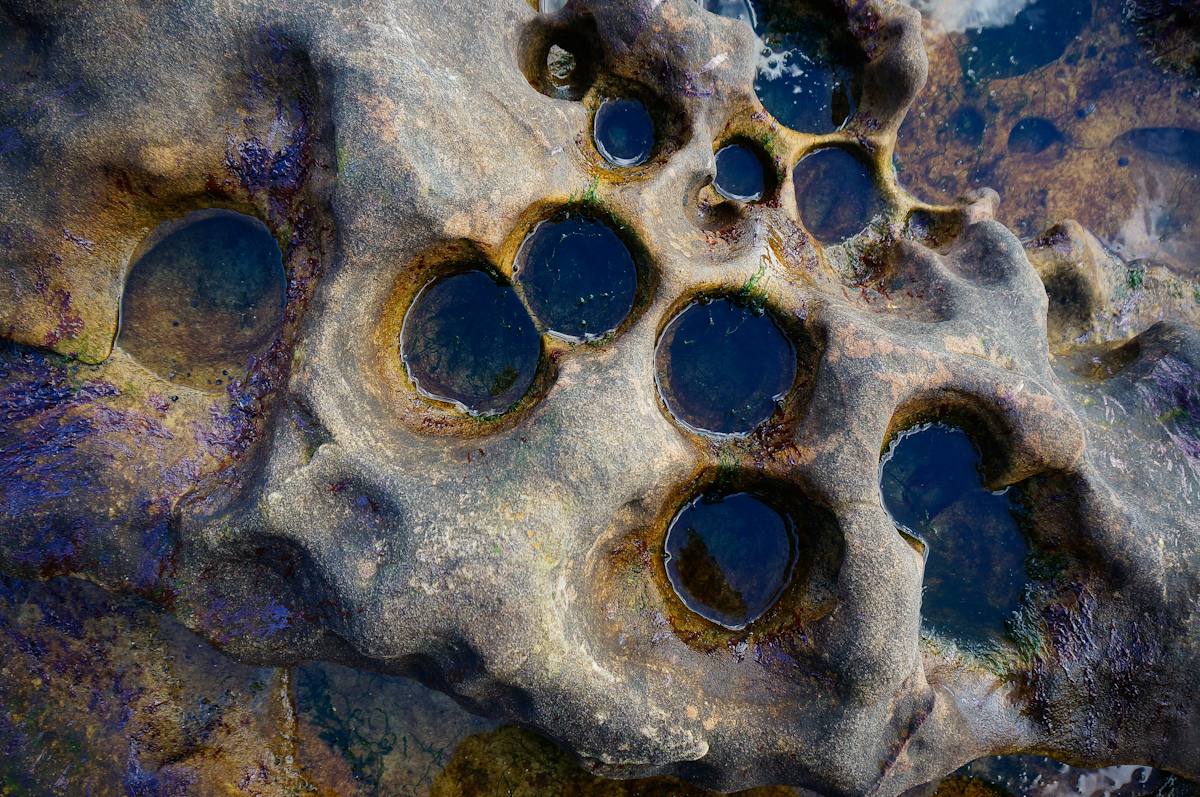
The shoreline around Carsaig has interesting geology.
As you walk, you’ll gain a unique insight into Mull’s intriguing geology. If you’re ready for a break, take some time out to pay closer attention to the rocks. You can even locate the KT boundary in the cliffs along the route. This section in the rock dates back to the event that caused the extinction of the dinosaurs.
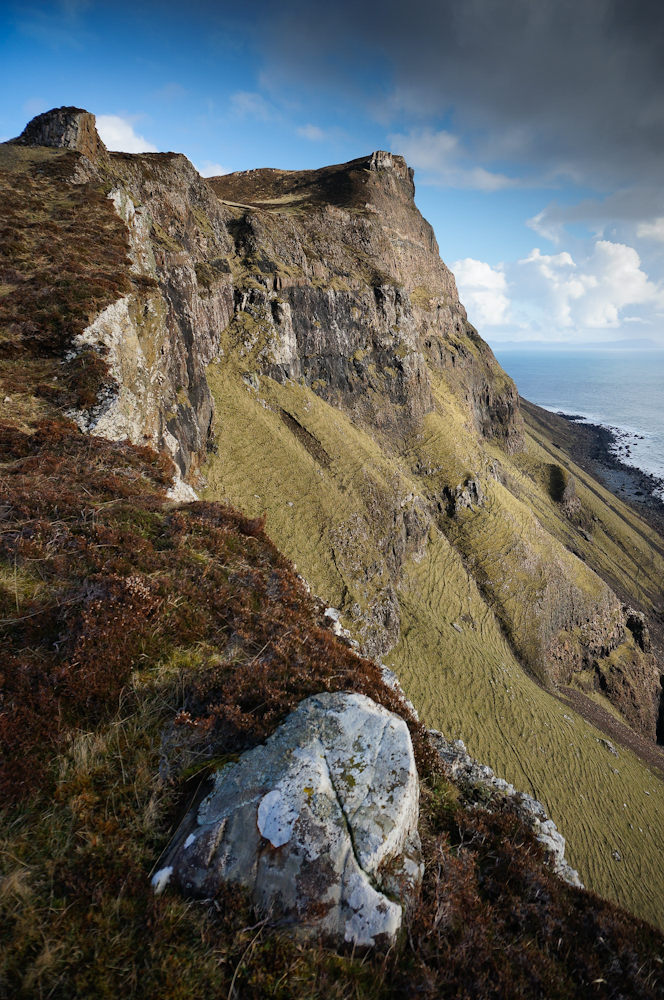
The route to the Carsaig Arches runs along the shore at the base of these cliffs.
Reaching the Carsaig Arches
When you near Malcolm’s Point, you have almost reached the Carsaig Arches. Just a short distance on from here delivers you an excellent view. Take your time to photograph the arches, eroded by the tides into the rock. They are another example of columnar basalt, which you’ll also see on a voyage to Staffa and Fingal’s Cave.
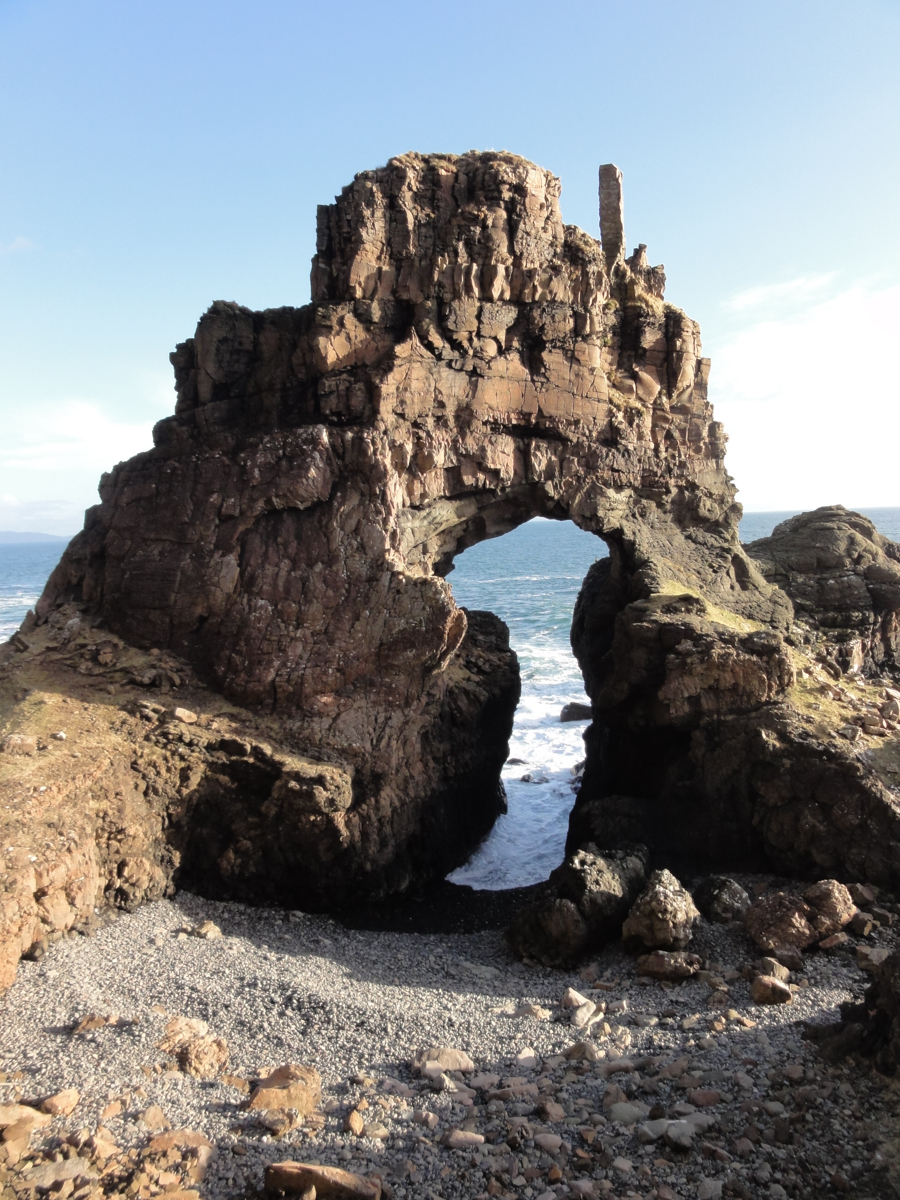
The spectacular second arch, viewed at a distance.
It is possible to climb up to the second arch, but this comes with significant risks. The way is exposed, the path virtually non-existent and the drops to either side treacherous. For this reason, many prefer to take in the second arch from a safer vantage point, rather than ascending it. Return the way you came with a full camera and an amazing memory from your holiday on Mull. Discover more walks on Mull and check out a map of the route to the Carsaig Arches.

Waves crashing through the arch.
Note: Hill walking has inherent risks and dangers. Conditions change quickly and navigation can be difficult. Always make sure you are well prepared for any conditions and have the correct level of experience for your chosen route.
